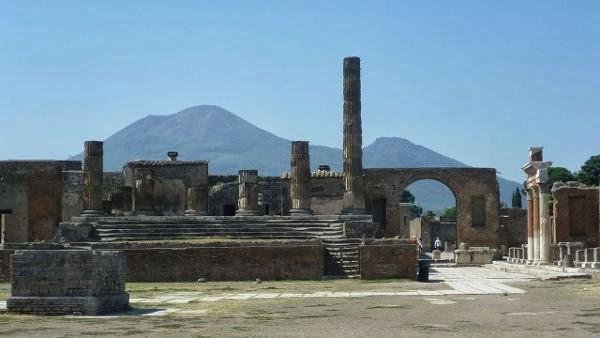Pompeii, Roman Proof Import Indonesia Spices In Early CE
The discovery at the excavation site of the city of Pompeii reveals the perception of how to eat the middle and lower class Romans in the form of soup and porridge, then the great trade of imported fruits, meat and spices obtained from Indonesia. The findings were revealed after a decade of excavations in two city blocks buried beneath the volcano, thought to have been buried since AD 79 and identical to the sixth-century building structure.
These findings will be officially published by the University of Cincinnati archaeologist team on January 4, 2014 at a joint meeting held annually by the Archaeological Institute of America (AIA) and the American Philological Association (APA) in Chicago. The research is supported by the UC Department of Classics Louise Taft Semple Fund, the National Endowment for The Humanities, the National Geographic Society, the Loeb Classical Library Foundation, and is funded by several private companies.
Pompeii is one of the Roman city that is located near the Naples region of Italy. Pompeii, Herculaneum and some of the surrounding villages were mostly destroyed and buried in the ground with a depth of 4 to 6 meters due to the eruption of Vesuvius mountain that occurred in 79 AD. The city is estimated to stand since the 7th century BC and fell into Roman hands in 80 BC. At the time of the eruption, Pompeii may have a population of 20,000 inhabitants, where the city has a complex irrigation system and a large port.
The evidence of the destruction of Pompeii originated originally from a letter of Pliny who claimed he saw the eruption from a distance and described the death of his uncle (Pliny), a Roman fleet admiral trying to save the people. The site has been lost for approximately 1500 years and rediscovered in 1599 and re-expanded in 1748. Pompeii has now become a tourist destination for more than 250 years under the auspices of UNESCO.

One of the evidence examined is the waste obtained from the drains and 10 latrines. Food waste that is found in the form of mineral food comes from kitchen and human waste, one of which is food scraps, especially grains. The material analyzed from the sewer discharge reveals a very clear quantity of material that distinguishes socially and economically between the activities and consumption habits of each property, including among others waste from lodging.
According to Steven Ellis, a team of archaeologists at the University of Cincinnati, the site excavations resulted in complete residential archaeological analysis where the site also stores a business center located at one of the busiest gates in Pompeii, Porta Stabia. The site area includes 10 separate building areas and has 20 store buildings that mostly sell food and beverages.
The ultimate goal of excavating the Pompeii city site is to find out the structural and social relationships of the time between the population, the workers, the roles of the elite, in shaping the great trading city and the role of historical, political and economic development in the Mediterranean region. One important data from the excavation of this archaeological site is an understanding of diet and food consumption structure of urban dwellers.